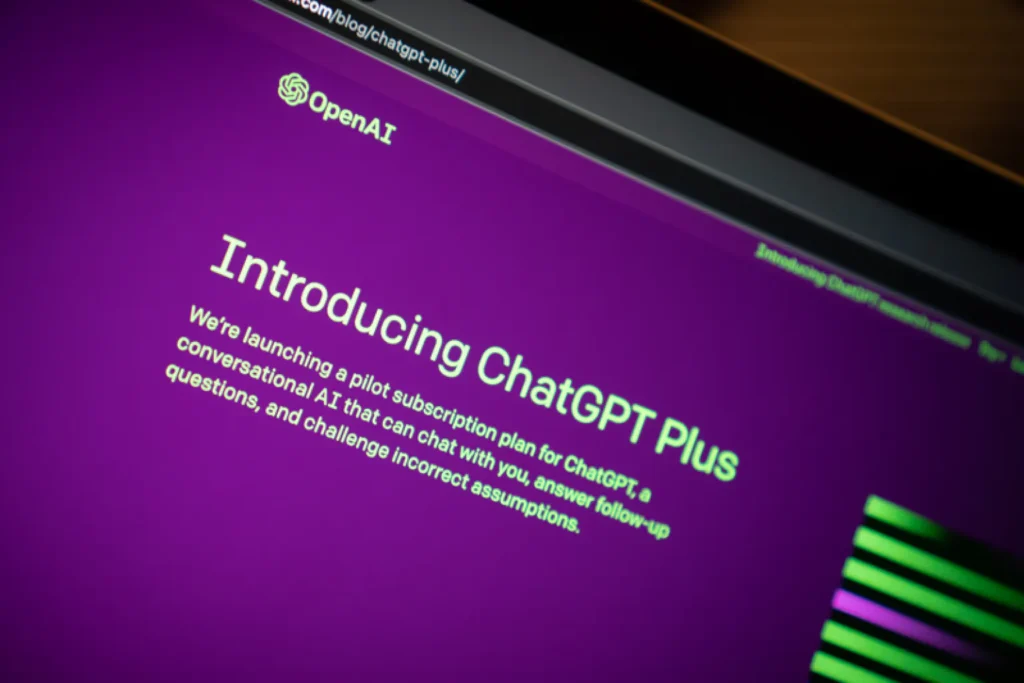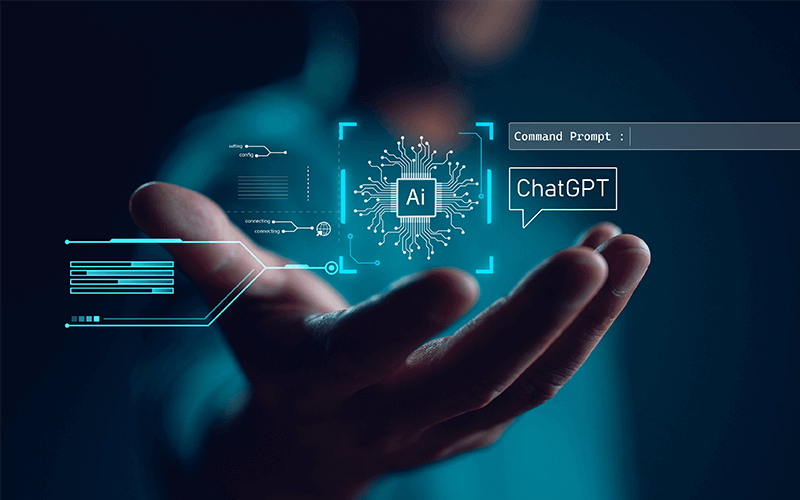LEARN HOW TO GET THE MOST FROM CHATGPT
Optimize your interactions, achieve better results and become an expert in this powerful language model
ChatGPT, developed by OpenAI, an American artificial intelligence research and implementation company, is an advanced language model that has revolutionized the way we interact with AI. With its ability to understand and generate text consistent with human speech, ChatGPT has become a valuable tool in various areas.
He has been trained in a wide variety of text data taken from the web, allowing the model to learn language patterns and structures. For this reason, it is able to have complete conversations with users and provide answers to questions, suggest ideas, perform specific tasks and help in a wide range of scenarios. In addition, it has the ability to generate text in different styles and tones, adapting to the needs and preferences demanded.

However, ChatGPT also has some limitations. It has the art of pretending to be perfect, although it is not. Just like their responses, which may sound plausible, being imprecise, outdated (as of 2021 knowledge is limited), invasive (lack of privacy) or biased. In fact, physicist Stephen Hawking expressed concern about the future impact of AI, arguing that its development should focus on benefiting humanity and not become a danger or completely replace our decision-making. Read this article about AI risks and how they are being regulated in different countries.
It is also true that OpenAI is continuously working on improving and refining language models to provide more secure and useful tools. These are the latest developments and advances.
In this text you will learn how to squeeze the full potential of ChatGPT, discovering features and tricks that will help you get the best possible results.
Understand the capabilities of ChatGPT
To make the most of ChatGPT, it is essential to understand its capabilities and limitations, as we have already advanced in the introduction of the text. While it is an impressive model, it is important to remember that it is an artificial intelligence and may have difficulty understanding certain concepts or providing accurate answers at times. He is competent to generate text and answer questions, but it is vital to remember that he is based on patterns and examples in which he has been trained. Therefore, he excels in providing information within his training data, but he may err in that which goes beyond his limit of knowledge. Keeping this in mind will help you adjust your explanations, expectations and use this technology more effectively.
Ask clear and specific questions
To get relevant and precise answers, it is important to ask clear and specific questions. Avoid ambiguous or too broad, as this can lead to unclear, overly general, inaccurate or out of context responses. Precisely, it also helps to provide a certain background to enrich the received message and to end any misunderstanding. By being direct and concrete, defining what format or type of response you expect (theme, length, style, references and tone), you will increase your chances of receiving a useful and coherent response from ChatGPT.
Use the iterative request technique
This function is one of the most outstanding. The iterative request technique consists of dividing a task and asking ChatGPT for each part individually. By guiding the model through the process step by step, you can achieve more precise and desired results. In addition, you get a bigger and more focused development to the defendant. You gain control of the response, including the length, and you can direct it to what you really care about, avoiding ambiguities. At the same time, it allows you to be more reasonable and consistent with the text you build. This method is particularly effective when dealing with complex tasks or when a specific structure is required.

Operation of system messages
ChatGPT offers system-level instructions, which can be used to guide your behavior, style and response tone. By incorporating messages similar to “you’re an X expert, give me detailed information” or “tell me X as if you were Y”, you can influence the result to align it with the requirements you need. Experimenting with different system messages can help you tailor the AI response. In the end, it helps the model better understand the purpose and expectations of the message you want. In this way, you conduct your responses, avoid incorrect information (by including clear and direct instructions to prevent the model from producing unwanted responses) and encourage more effective collaboration with the tool.
Take advantage of previous knowledge
If you have access to additional information or specific knowledge about the topic under discussion, you can provide ChatGPT with that knowledge to improve the quality of the responses generated. It is true that this technology has a lot of general data, but it may not be fully updated beyond its knowledge limit. That’s why, by integrating sources, external references or providing specific information, you can achieve a more valuable result, as it will have a context and AI will integrate it into the response it gives you, which will obviously be more personalized, accurate and reliable.
Participate in interactive conversations
One of the biggest advantages of ChatGPT is its ability to engage in interactive conversations. By having a back-and-forth dialogue with AI, you can refine your queries, ask for clarifications, and get more accurate and actionable answers. This interactive approach allows you to benefit from the model’s ability to maintain the context you want and build on previous entries, enriching your messages. As this is a talk, you can get detailed explanations about concepts, clear up follow-up questions and get practical examples, which will help you to deepen a specific topic and improve your understanding.
Correct and give feedback
The above idea is closely linked to it. As a language model, ChatGPT does not always produce perfect or error-free answers. This is why, by correcting it, it can help improve the quality and accuracy of the responses generated, especially when it comes to updated information after the model’s knowledge cut-off date. This feedback can also occur when inherent biases in training data come to light and correct the spread of incorrect or biased information. By doing so, you not only improve your personal experience, but also contribute to training and improving it for the benefit of all users, as experts and developers will be able to take advantage of your experience.
Interact politely, respectfully and ethically
It is important to remember that although ChatGPT is an artificial intelligence, we must interact with it in a polite and respectful manner. By using a friendly and considerate tone, we foster a more positive relationship with technology and create an environment in which everyone can benefit equally. In addition, as the chatbot’s capabilities are explored, it is crucial to make ethical and responsible use, avoiding the abuse, manipulation or dissemination of false or misleading information. Therefore, it is also important to critically evaluate and verify the information generated by AI, being aware of its possible biases, while avoiding the promotion of discriminatory, offensive or harmful discourses. In short, we must have social responsibility and consider the consequences of its use in different contexts, such as disinformation, manipulation of opinions or undue influence. Remember that it should be used as a tool to increase human intelligence and not as a replacement for critical thinking and self-judgment.
In short, ChatGPT opens up a world of possibilities and provides a powerful assistant. By correctly understanding their capabilities, providing clear instructions, leveraging iterative functionality or interactive conversations, you can unlock the full potential of AI. However, the tool must be used responsibly, verifying the information and maintaining ethical considerations. In this article you will find some more specific functions that can run ChatGPT smoothly.
If you want to know more about artificial intelligence… Listen our podcast!
If you are looking forward to learning more about artificial intelligence in various areas of our reality, we recommend the chapter “AI and the future of work” from the podcast where we discuss issues relevant to entrepreneurs with outstanding figures from the ecosystem.
Sergi Vila, CEO and co-founder of Bcombinator, speaks with Miquel Mora, also co-founder, entrepreneur and expert in agile methodologies and startup construction, about the potential of AI and how it can become the biggest technological change in history.
Watch the podcast on YouTube here: https://www.youtube.com/watch?v=nGmKQQMEp9s
Listen to the podcast on Spotify here: https://open.spotify.com/episode/4pBp1IhdZKTnxsynIm5bca
In addition, we also advise you to listen to the episode “Integrate AI in your business”, in which Clemente López, director of the incubation program of Bcombinator, speaks with Luis I. Cortés, director of investments of the company, entrepreneur and business angel, about AI applied to organizations, to learn about its different applications, its risks, how to form, among many other related issues.
Watch the podcast on YouTube here: https://www.youtube.com/watch?v=O1VaUGDgGJo
Listen to the podcast on Spotify here: https://open.spotify.com/episode/7sLcTPUwEwQaVcnKtgmC81
Undoubtedly, these are two really interesting and profitable options, with two conversations full of knowledge and usefulness on a current topic with a lot of future. ¡ Enjoy them on your favorite platform!
